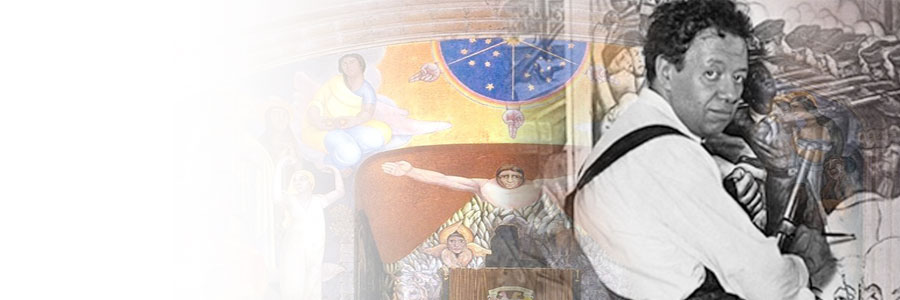Diego Rivera, a memorable figure in 20th century art, actively painted during the 50 years from 1907 to 1957. Mexican by birth, Rivera spent a good portion of his adult life in Europe and the United States as well as in his home in Mexico City. Early in his career, he dabbled in Cubism and later embraced Post-Impressionism, but his unique style and perspective is immediately recognizable as his own. He was involved in the world of politics as a dedicated Marxist and joined the Mexican Communist Party in 1922. He hosted Russian exile Leon Trotsky and his wife at his home in Mexico City in the 1930s. Lived in unsettled times and led a turbulent life, Diego Rivera, widely known for his Marxist leanings, along with Marxism Revolutionary Che Guevara and a small band of contemporary figures, has become a countercultural symbol of 20th century, and created a legacy in art that continue to inspire the imagination and mind.
Diego Rivera’s first government-commissioned mural, Creation was created over the course of a year and covers over a thousand square feet. It is an allegorical composition with mythological and religious motifs.The figures in the mural are over twelve feet high, which were in proportion to the huge pipe organ which surrounded the wall. At the top a symbol, which could represent the Divine Trinity with blessing hands.It also follows old Egyptian iconography of Aton, the symbol of the creative sun. At the bottom Eva and Adam. Over them on both sides the nine Muses. And on the next level the Christian Virtues: From the left: Love, Hope and Faith and on the right side: Prudence, Justice and Strength. In the sky Wisdom and Science.Everything is in classical renaissance style, where similar allegories are common. The figures are based on life models. Note that the picture does not have any political, ideological tendency. The painting technique is encaustic, which means that the pigments were applied suspended in molten wax. A complicated technique which the old Egyptians already knew.
Although it was widely popular, Rivera felt that the painting was too Italian in technique, and he did not like it. During the painting of the mural, Rivera felt compelled to carry a pistol with him at all times, to protect himself from the right-wing students.


